Spending money is a funny thing, buying something can be so liberating and also so handicapping. We have the ability to research nearly every purchase, reading reviews, comparing prices, and even considering buying something used. We can learn so much about a purchase, sometimes too much, that we never end up pulling the trigger as we come head to head with a case of decision fatigue.
If there is one thing I’ve learned in my lifetime of purchasing some really smart things (nice leather shoes) and some really dumb things (pretend leather shoes), I keep coming up against the same principle: It pays off in the long run to buy something quality over a “good” deal on something substandard.
When you buy a high quality knife you are honestly buying a knife for life. The strength of the steel can even out last you! But that does come with a disclaimer… and that is, you MUST take care of your precious knives.
So, let’s chat about how you can make some simple changes to your daily routine to make sure you are getting your money out of your best friends, your beautiful knives.
Washing your Knives
WASHING:
- It is best to clean your knives straight after you have used them.
- Wash them in warm water using a damp cloth and dishwashing soap.
- Dry them carefully. Rub your towel and cloth along the spine of the blade to avoid cutting.
- Never place in a sink of soapy water. Hidden knives at the bottom of the sink can be dangerous.
NO DISHWASHER:
- Knives and cutlery are put in a basket. During the washing cycle, the blades can rub against one another or against other objects and this can damage them.
- With their sharp blades, the knives can damage the plastic coating on the cutlery basket. This can lead to the formation of rust.
- If the dishwasher is not switched on straight away, food remains (spices, sauces, juices) can damage the blades. Spots can form and the blades can even be damaged (corrosion).
- It is important to use the correct amount of detergent and rinse aid. If you do not use the correct amounts, rust particles or localised corrosion can quickly appear. In most cases, these spots can easily be removed using a standard steel cleaning fluid.
Keeping your Knives Sharp
Every knife needs to be sharpened, it’s just part of using knives. As we continually apply pressure to the edge of the blade through cutting, the particles of steel become misaligned creating a wavy edge (often impossible to see with the bare eye) and this creates resistance when cutting. This resistance forces you to apply more pressure when cutting, which is actually much more dangerous. Our favorite phrase to use: A sharp knife is a safe knife.
Use a Cutting Board
The first step to keeping your knives sharp is to make sure you are using a cutting board that is appropriate for steel (or ceramic) knives. Always use your knives on a firm surface such as a wooden, bamboo, or polyethylene cutting board.
Honing vs. Sharpening
You’ve likely heard of honing and sharpening, but what’s the difference? Do you need to do both? The answer is this: Honing realigns the particles of steel from a wavy line to a straight line, but it does not remove the stray pieces of steel to make a new edge as sharpening does. Honing can be done frequently- even every time you use your knife. Because sharpening your knife removes a small amount of steel to create a new sharp edge, you likely won’t need to sharpen your knives more than twice a year.
It is important to regularly hone your knife to keep the blade aligned. It is also important to not over sharpen your knife, as removing the small pieces of steel can actually change the shape of the blade over time.
For every hour and a half to two hours of use, you should be honing your knife, maybe even a couple times a week.
How to use a Steel
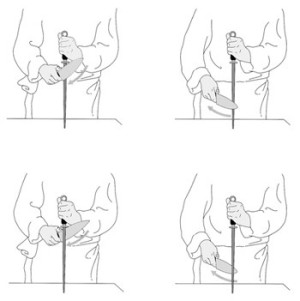
- 1. With your non-dominant hand, place the honing or sharpening steel point-down, with the tip of the steel resting on a dry firm surface such as a cutting board.
- 2. In your dominant hand, hold the knife to the steel. You should begin honing/sharpening with the heel of the knife towards the top of the steel. You will be pulling towards you and downwards simultaneously, as if you were going to gently slice into something.
- 3. Tilt the knife so that there is a 14 degree angle between the knife and the steel. If you are honing or sharpening an Asian styled knife, tilt the knife to a 10 degree angle.
- 4. Gently pull the blade toward you while gliding it downward, ending with the top of the knife at the bottom of the steel. Be sure to maintain the correct angle as you go. A fairly sharp knife may only need 2-3 repetitions, while a dull knife will need more.
- 5. Place the knife on the other side of the steel so you can sharpen the other side of the knife and repeat the process.
- 6. It is important to clean your knife after honing or sharpening so that you remove any excess steel.
The safest way to use a sharpening or honing steel is through a supported method.
Honing Steel
To ensure that your knives stay beautifully sharp, a honing steel should be used regularly. Over time, knives will deteriorate and lose their edge. Honing re-aligns the microscopic teeth in the blade that can’t be seen with the naked eye. By regularly honing your knives, you will maximize the time in between sharpening.
WÜSTHOF honing steels are made from hard chromium plated steel with a hardness of 65 Rockwell. All honing steels are produced from an alloy tool steel (material no. 2210) with 1.15%C (carbon) content, .6% chromium and .03% vanadium.
Sharpening Steel
When a knife’s edge becomes dull, you can reset the edge with a diamond steel or ceramic steel. The difference between a diamond steel or ceramic steel and honing steel, is that a diamond steel and ceramic steel will actually grind away material from the knife, allowing it to reset the edge.
The shape of a diamond sharpening steel produces an optimum edge when sharpening knives. The diamond sharpening steels have a solid stainless steel core and the surface is covered in diamond grains. Depending on the size of the sharpening steel, up to 2 million diamond grains are applied to the surface. Diamond sharpening steels have an extremely fine grit that guarantees a smooth, sharp finished edge.
A ceramic sharpening steel, much like a diamond sharpening steel, will reset the edge of a dull knife. Ceramic sharpening steels are slightly less abrasive and will gently sharpen knives in comparison to a diamond sharpening steel resulting in a finer edge. Ceramic knives are offered in two different grits, 300 or 1,000. Although ceramic is harder than steel, it is brittle and will break if it is dropped.
Handheld Sharpener
Many customers find that they love using a handheld sharpener. They include a “fine” and “coarse” setting which allows you to “hone” with the fine setting, and “sharpen” with the coarse setting all in one device.
The hand held sharpener is pretty fail-safe as long as you don’t use the “coarse” side too frequently, as you will change the shape of your blade as you remove small pieces of steel each time you use it.
Whetstone or Tri-Stone Sharpener
Many chefs prefer the style and control that using a whetstone gives you when sharpening, Our tri-stone sharpener allows you to hone and sharpen with one tool. This take a little more practice to get the correct angle, but it will certainly result in a very fine, sharp edge.
Storing your Knives
Finding a good storage option for your knives is easier than you think, and it is one of the single-most effective ways to preserve the sharp edge on your blade.
We have been guilty of piling our knives in the Gygi kitchen into a drawer and hoping for the best. Our knives inevitably end up with dings and scratches as the blades rub and make contact with one another. This require more frequent honing and sharpening, therefore shortening the lifespan of our lovely knives. We are committing to change! Here are some options for knife storage:
The least expensive option for knife protection is using one of our blade covers. They come in a variety of sizes, and are easy to use. Simply slide them onto the knife blade inserting the edge first. You can then continue to keep your knife in the drawer (or wherever it fit before!)
We also love a magnetic strip for knife storage. Mount the strip somewhere in the kitchen, many find the backsplash above the counter to be an ideal place, but others hang it in a cupboard or pantry. Simply attach the knife to the strip with the spine making contact first, and then let the magnet do its job. We have a number of magnetic strip knife holders in the store.
Another great option is the drawer storage tray. This slim organizer can hold up to 14 knives- 8 for shorter blades and 6 for longer knives. It also includes room for a sharpening steel. This is a great option for those with drawer space who want to clear up their counters. The tray is made of solid wood with felt bottom to protect your knives and your drawers.
You can’t beat the classic knife block. Show off those beautiful knives with a variety of styles and sizes for all knife collections. This option keeps your knives accessible and easy to reach.
No matter which option you choose, we know that taking a little time in the care of your knives will be an investment for the future. A well-loved knife will last a lifetime. Can’t beat that!

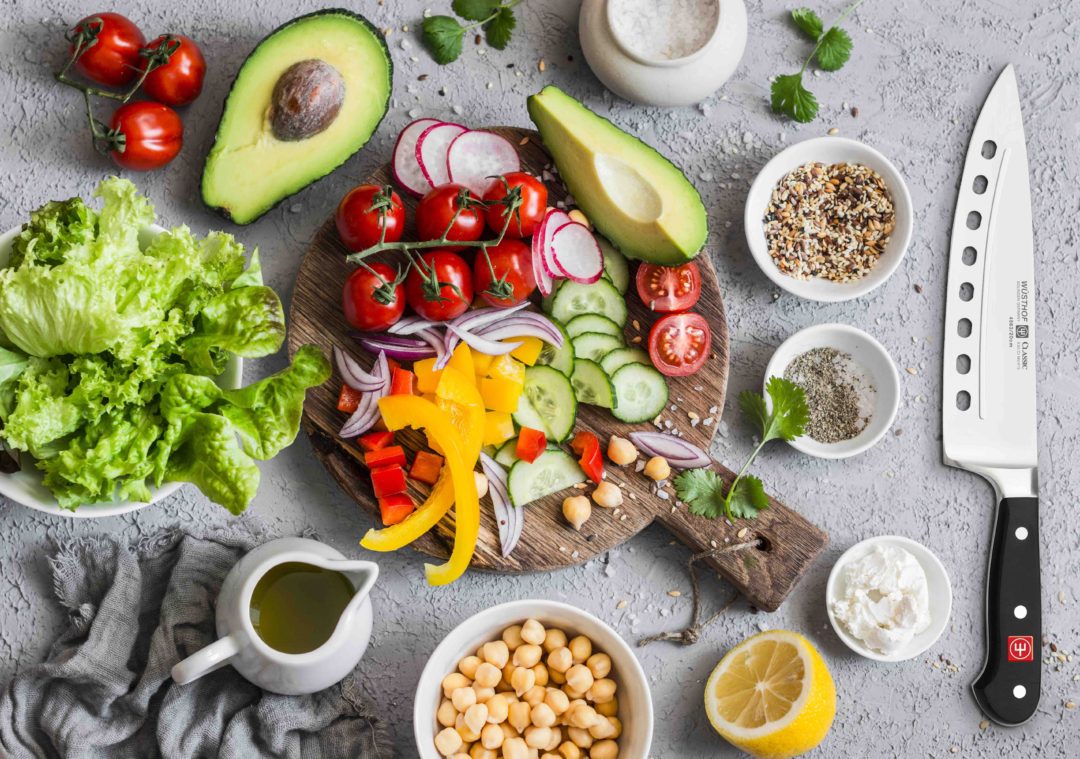
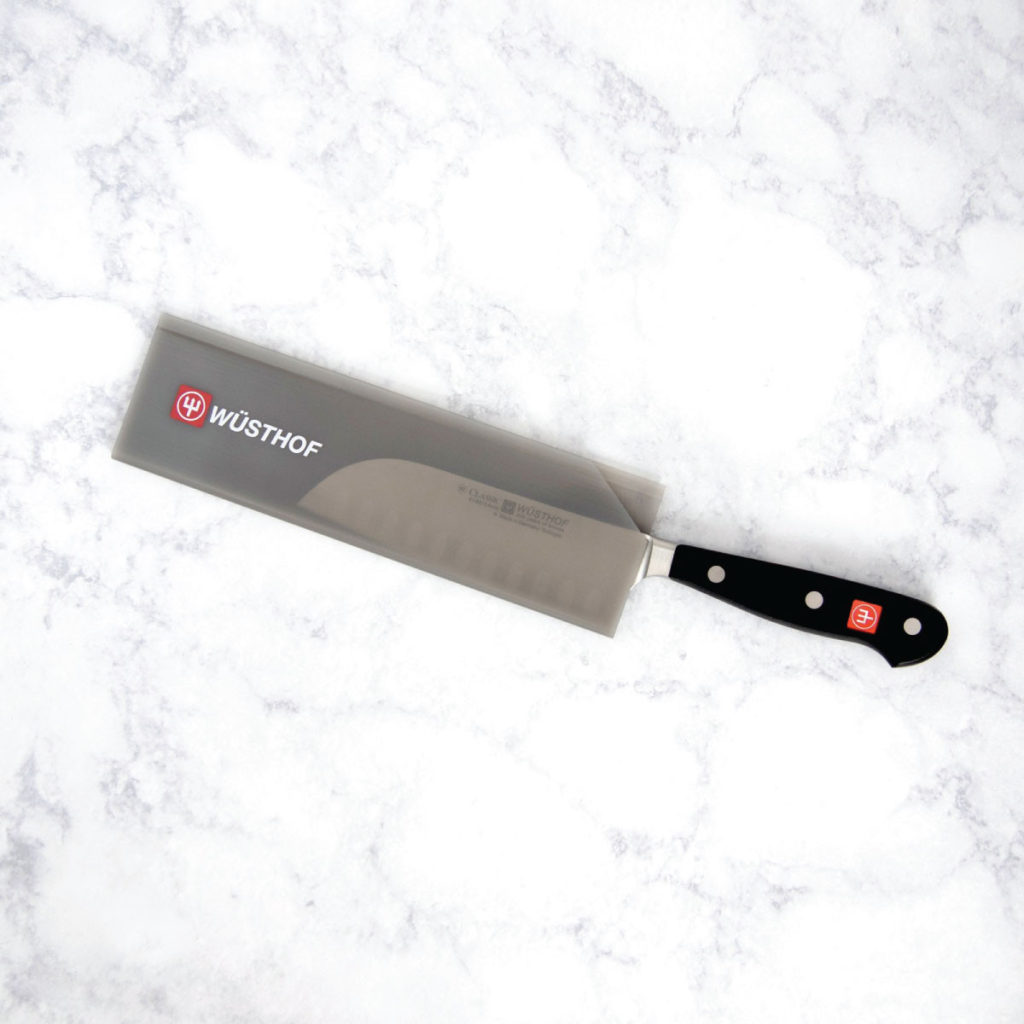
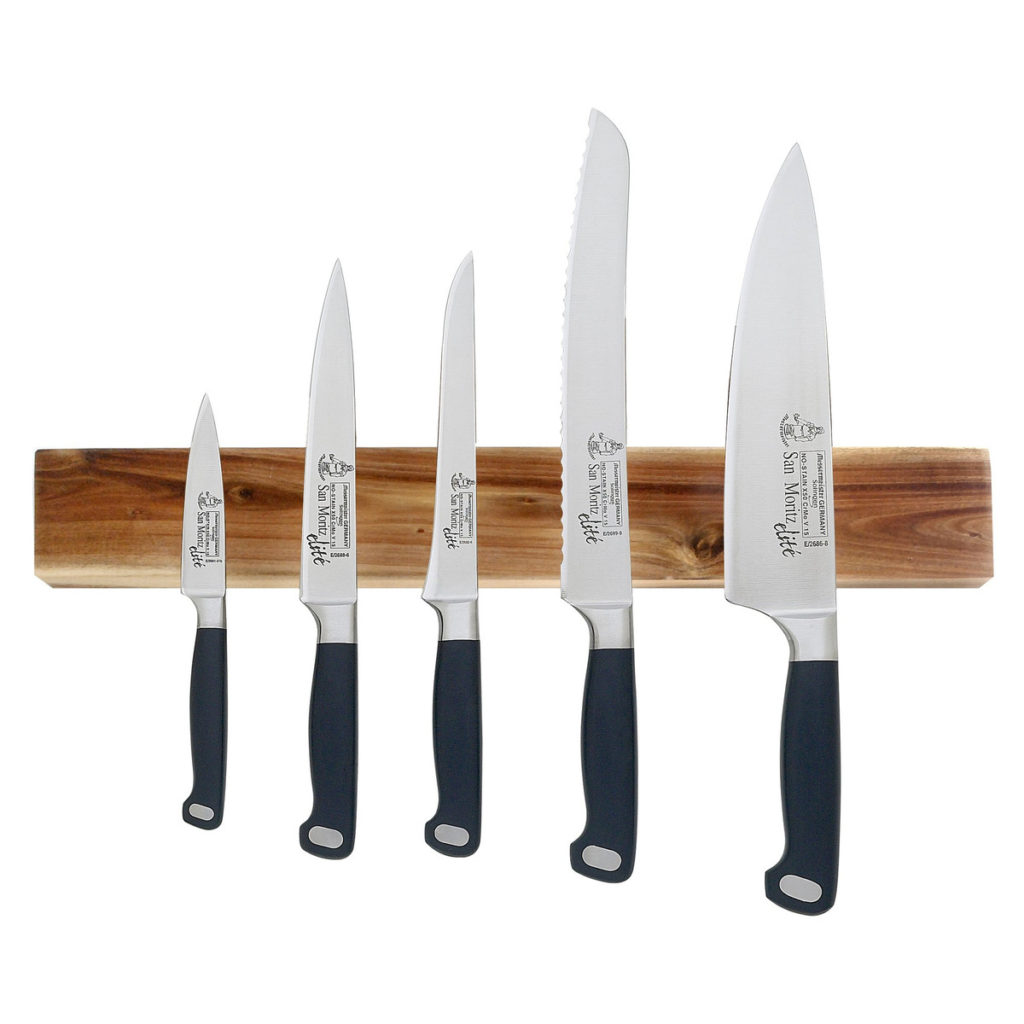
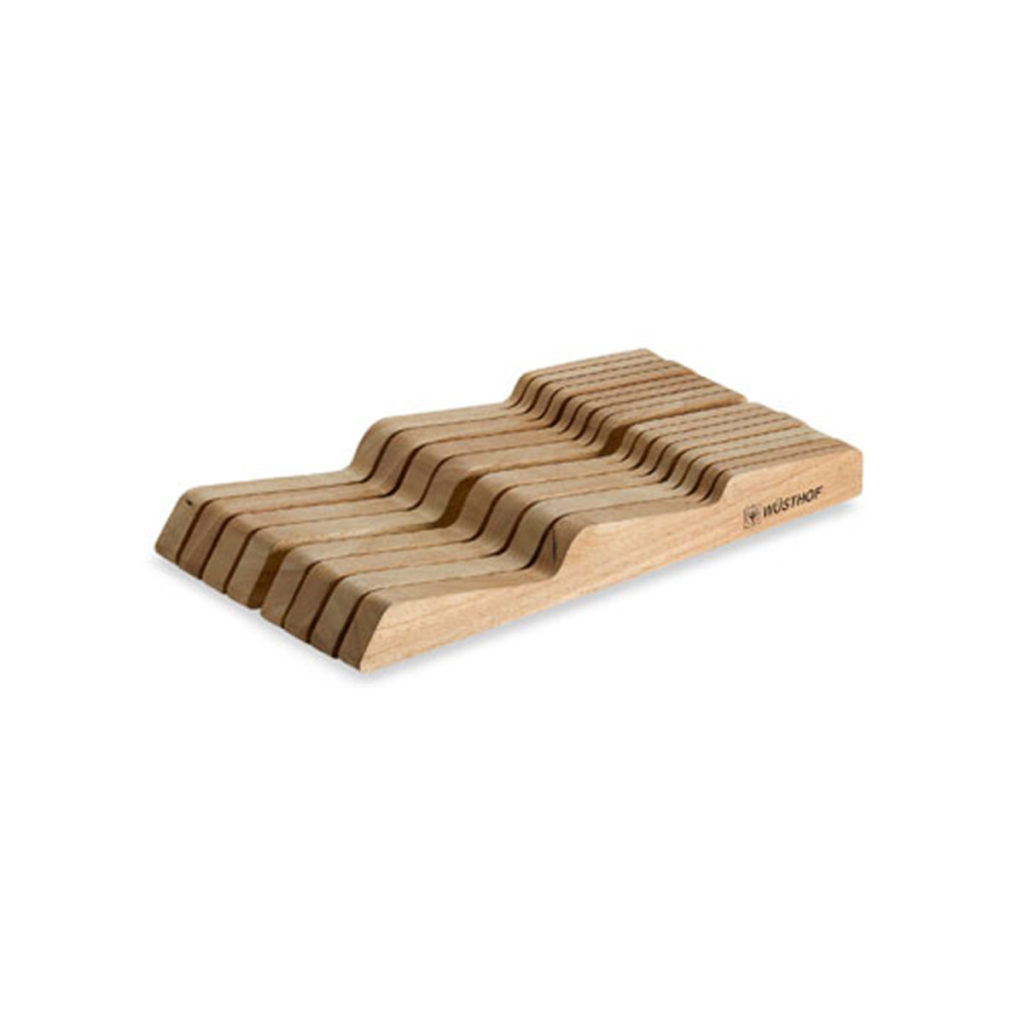
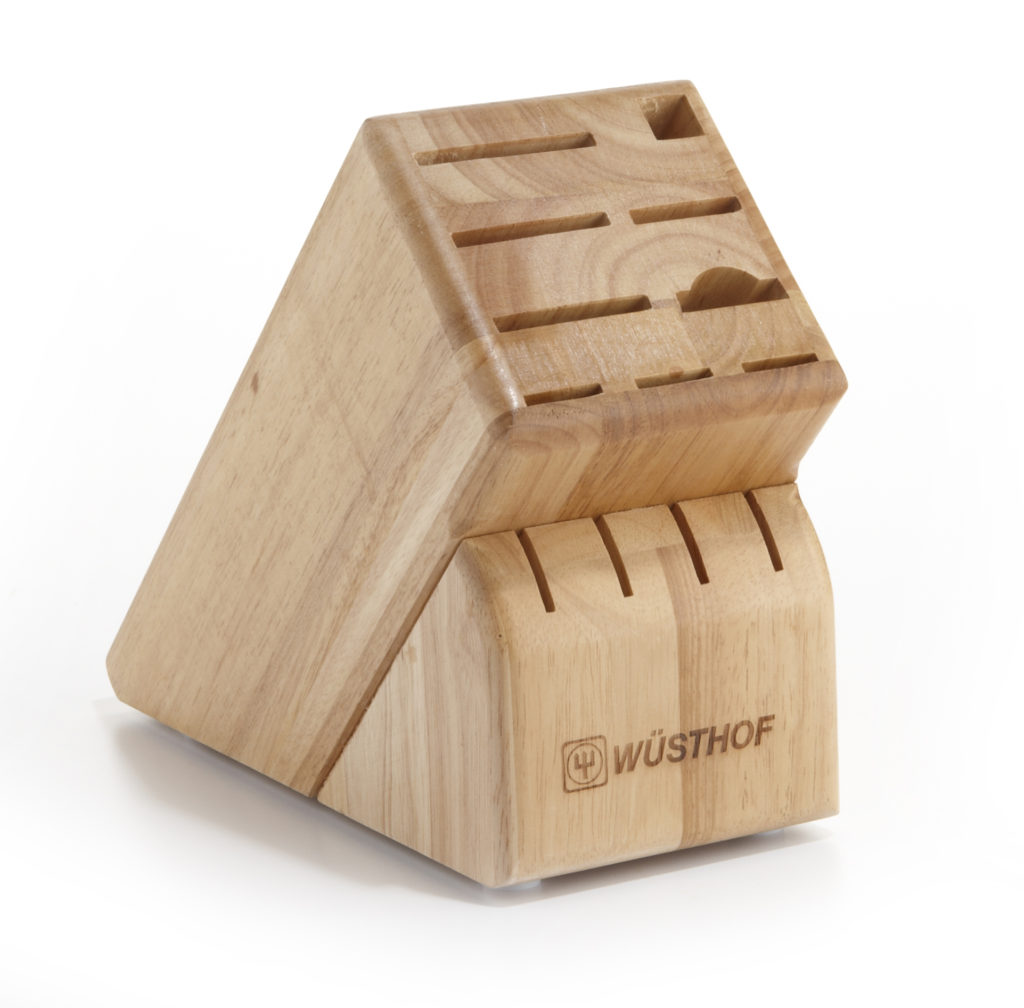
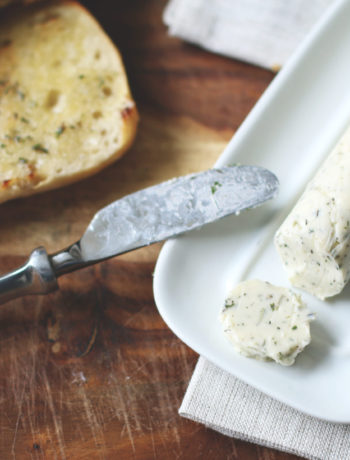

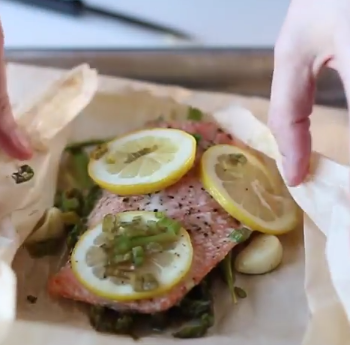
No Comments